When I was around 11, my Grandad gave me my first Cactus. I remember him telling me houseplants loved to live indoors around people and that they were very easy to keep. As he handed me the spiky plant he told me that he had owned this particular one for five years and had never had any problems.
I believe the words "Cacti are impossible to kill" were even uttered as I happily took my new plant friend from him. But he was wrong. It died soon after. And I was mortified.
The truth is that houseplant ownership isn't always plain sailing and things do go wrong, even if you have the best intentions. Especially if you're just starting out.
But even knowledgeable houseplant owners still experience the majority of the mistakes detailed in this article from time to time. Clichéd as it sounds, it's all part of the path to learning and becoming an expert.
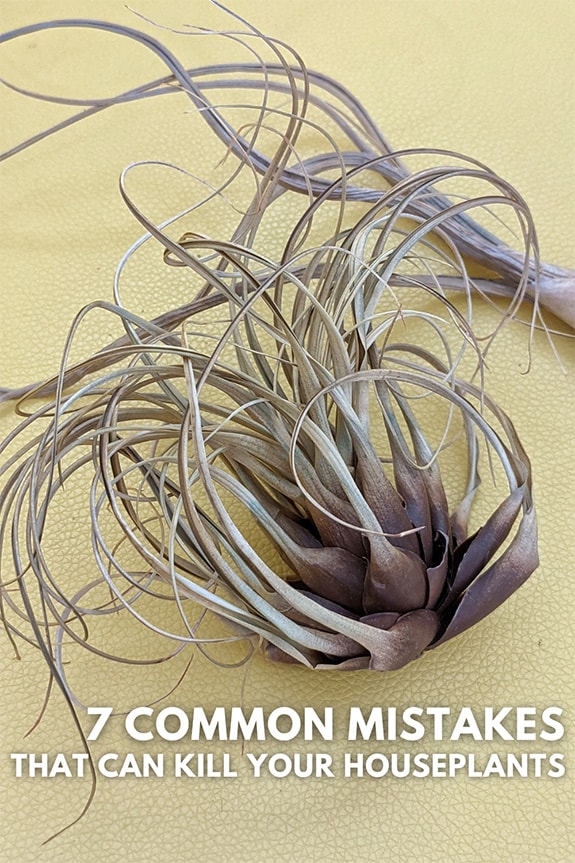
A dead houseplant - caused by one of the 7 things listed below.
Maybe you've stumbled on this page because you're convinced you have the classic black thumb that can be inherited, caught, or just plain cursed with and you're desperate to find the elusive cure?
Well, firstly the good news is that in general plants do want to live and do that quite well without a huge amount of effort from you.
The bad news is they have a variety of different needs and we all have different growing environments. This means you can do any number of the "mistakes" listed in our article which can all end in throwing your plant out.
If you're a repeat offender as you read through, try to spot which ones you're prone too and read up on our suggested articles to enhance your knowledge and skills.
In the meantime, this article, featuring the 7 most popular ways to end your houseplants (and how not to do it) is dedicated to the plant slayers of the world. ;-)
1
We get it. You've just got a new plant, maybe you've already picked out a name! It's exciting and you love it already. It almost goes without saying that you just want to keep it happy and beautiful looking.
Despite your good intentions though, it's very easy to fuss your new plant to its demise. It's not really your fault we know, you just want it to settle in and do well! But the number one reason houseplants don't make it long term is due to incorrect watering and the leading mistake with this is overwatering.
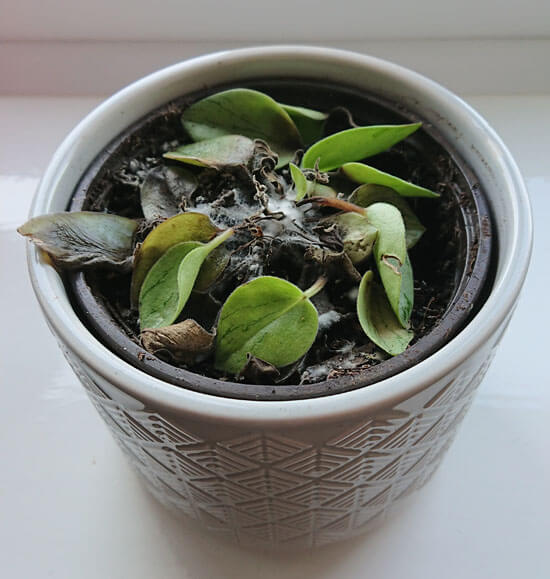
Overwatering a houseplant is the number one cause of indoor plant demise.
Of course, as a good attentive host, the last thing you want is for your houseplants to become thirsty! But the problem is you keep on watering until you drown the roots. The soil is sodden and if you tilt the pot over a glass you can pour yourself a smelly brown colored drink. Not good for you, and lethal to the plant.
You need to learn the art of patience and give time between watering. Not only that, but you might not need to give as much when you do come to water.
Make sure the drip tray (or whatever you are using to prevent damage to the surface underneath the pot) isn't still filled with liquid an hour after you've watered. If there is water left over, pour it away.
This is a broad topic, with lots to cover, so if you're struggling to find the balance here as a proud plant parent, have a read of our watering guide linked just below.
(And if you really just can't get it right.... have you thought about becoming a Marimo parent? It's literally impossible to over-water them!)
Watering Guide
How do you know if you're overwatering your houseplants?
Why do plants die in waterlogged soil but survive in water?
What does root rot look like (and how to fix it)?

Hi, I'm Tom!
If you're like me and enjoy the challenge of growing houseplants and getting them to thrive, then Ourhouseplants can help. This website shares my knowledge and years of growing plants and provides (hopefully) helpful advice on properly caring for your indoor plant friends.
2
The second most popular reason for houseplants passing on is also water related, but unlike the previous problem, this is the flip side of not watering enough. AKA - underwatering.
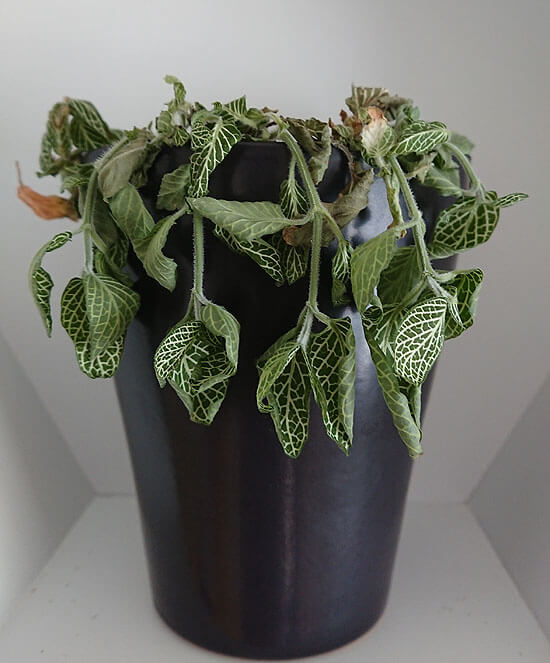
This Fittonia has not been watered for a long time.
This happens largely for one of two reasons. One you're the type of person who will openly admit to being oblivious to the parched plants around you. Screaming from thirst they desperately try to give you visual signs they need water but to no avail, you just don't notice until all that's left is a dusty crispy carcass.
The second type of person is someone who is normally good with plants but something random has gone wrong. Perhaps the temperature has got really warm without you noticing, or you've gone on holiday and the houseplant sitter has messed up.
If you're the first type of person (at this point in time) you simply won't care for your houseplants properly in the long term. Don't worry you've got a few options:
If you're the second type of person and the failure was a fluke. Learn from it and move on. We all make mistakes and it's not worth beating yourself up about it.
Why plants are good for you
Watering guide
3
Like people, the majority of houseplants are accommodating to a wide range of temperatures. But low temperatures and frost aren't one of them. We don't want to lose bits of our fingers and toes from frostbite and neither do plants.
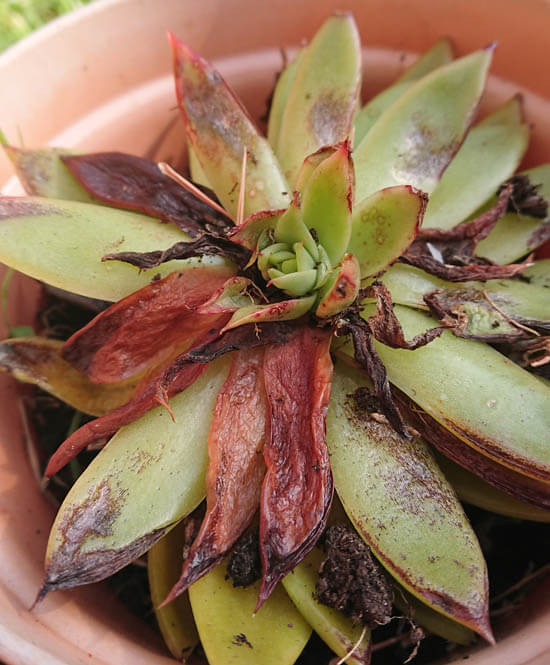
Always protect your houseplants from being too cold - most will turn to mush otherwise!
So why on earth why did you think leaving your houseplant outside or in that unheated conservatory when Winter crept up was a good idea? Perhaps it was simple forgetfulness or some bizarre science experiment to see "what would happen" who knows. Either way, you've gone and done it now.
If you're cold then so is your houseplant. Always keep them in places that are at least the minimum temperature that they'll accept.
Temperature guide
Find out your houseplants minimum temperature
4
Pests suck. Literally. They also give houseplants a bad, and undeserved reputation by making them appear like dirty and unclean things, crawling with bugs or mites. Seasoned houseplant owners will already know that fortunately, pests are reasonably uncommon.
However, pests and disease are the blight of many houseplant nightmares, causing mess and grime to the surrounding furnishings. They also weaken and sometimes even "unalive" our green-leaved friends in the process.
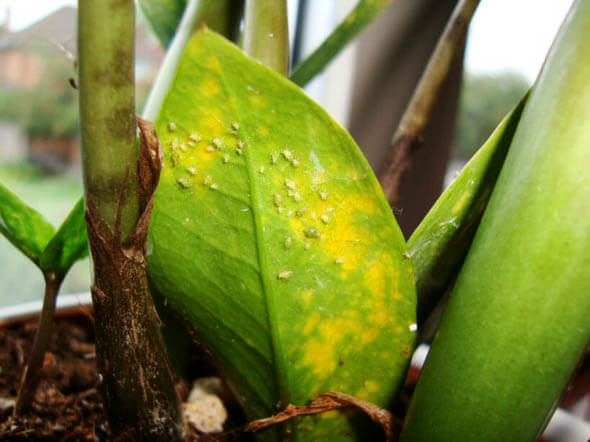
Always protect your houseplants from being too cold - most will turn to mush otherwise!
Of all the reasons listed on this page, this is the only one which is borderline outside of your control. Notice or treat the problem too late and everything might be lost if the infestation has taken hold or spread to surrounding plants.
You aren't off the hook completely though, because diseases and pests don't destroy overnight (unless you have a slug or snail problem) so a negligence claim against you might still be quite justified!
Observe and notice your houseplants (if you're admiring their beauty anyway, this won't be hard), then when something starts to look wrong you'll be able to tell and treat the problem early on.
Our pest guide
Our disease guide
5
You learned in school that plants need sunlight to be able to grow big and strong, so you figure that sun drenched heat trap you've got can only be a good thing in the grand scheme of things.
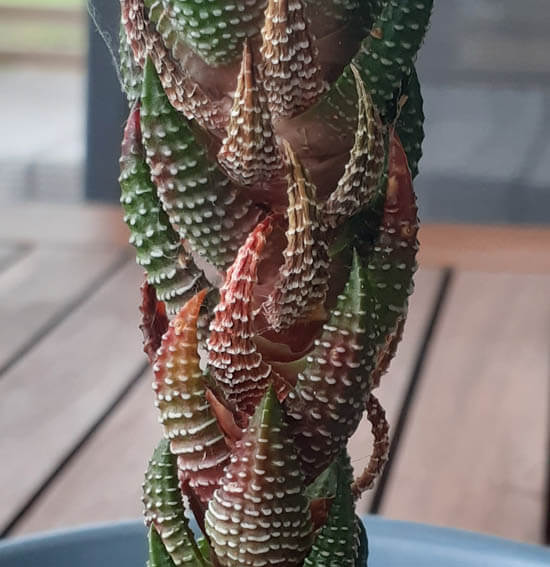
Plants need light for photosynthesis, but too much can be bad - This one has sunburn!
Your intentions might be good and pure so we have to give you credit for that, but remember that saying "too much of a good thing", that's what's happened here. It's fair to say your placement choices need work because you've just given a lethal bout of sunburn to your plant and no amount of aftersun lotion is fixing this boo boo.
There is no doubt that all houseplants need a degree of light. Some more than others. Even so only a small handful of plants will cope with prolonged direct sunlight. To prevent this problem all you have to do is learn what amount of light your houseplant needs to do well.
Light guide
Find out your houseplants light needs
6
For a plant to succumb from too little light is rare. We could be talking months or even years with leaves falling and very few new ones growing to get to the point it gives up on life. So if you achieve this incredible feat you get the medal for prolonged houseplant cruelty.
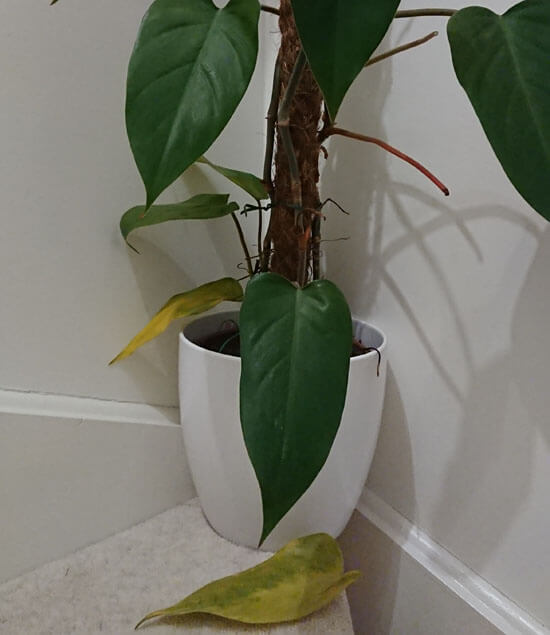
This Philodendron is in a slow decline as a result of too little light.
But perhaps you shouldn't feel too guilty. It tends to not be the low light that finishes the plant off. Usually, it's combined with one of the other mistakes talked about in this article.
For example, you've noticed your plant's not doing too well and not sure what's going on, you try to fix the problem, perhaps by giving it extra water which in turn causes an overwatering ending.
All plants need light and none want endless darkness. Give it the required light levels by reading up on your plant's needs.
A good piece of advice I once heard is that your houseplant should be able to see the sky from where you've put it to grow.
To test this, you can squat down right next to your plant and look for the sky. If you can see it from a window or an overhead skylight that's a good sign. If you can't see any sky at all, then you probably should think about moving your plant.
Photosynthesis basics
Light guide
7
It's really hard to cause issues by underfeeding. Even if you never use fertiliser as long as you repot once every couple of years your plant will survive, so the potential to cause damage by overfeeding is massively more probable.
However this is still one of those random rare things that should only happen by accident, perhaps a one time overdose, for example, you didn't dilute the concentration and accidentally poured it into the soil neat. Which is why too much fertiliser is number 7 on our list.
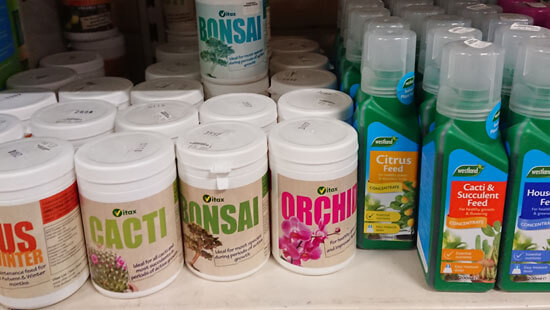
Most houseplants love to be fed from time to time, just make sure you don't overdo it.
There is not a single reason why you should overfeed a houseplant unless your intentions are on the wicked side. Stop being a feeder and start being a carer by reading the back of the fertiliser bottle or box and understand how much you need to be giving your plant.
Never double up or provide more than recommended. Too much can change the chemical makeup of the growing medium and cause serious problems for the plant.
And that's the end of our article. Have you fallen foul of any from our list? Go on, share your horror stories in the comments below and make our other readers feel a little bit better!